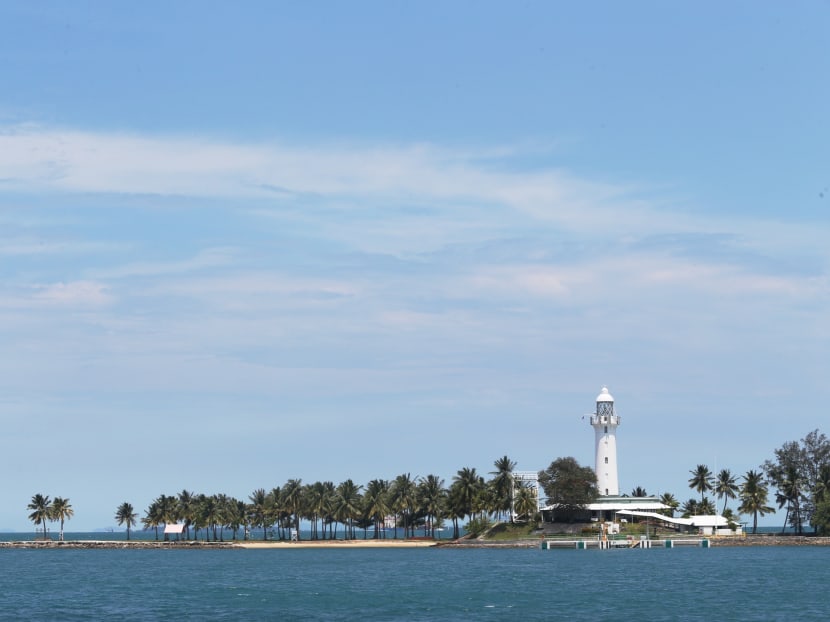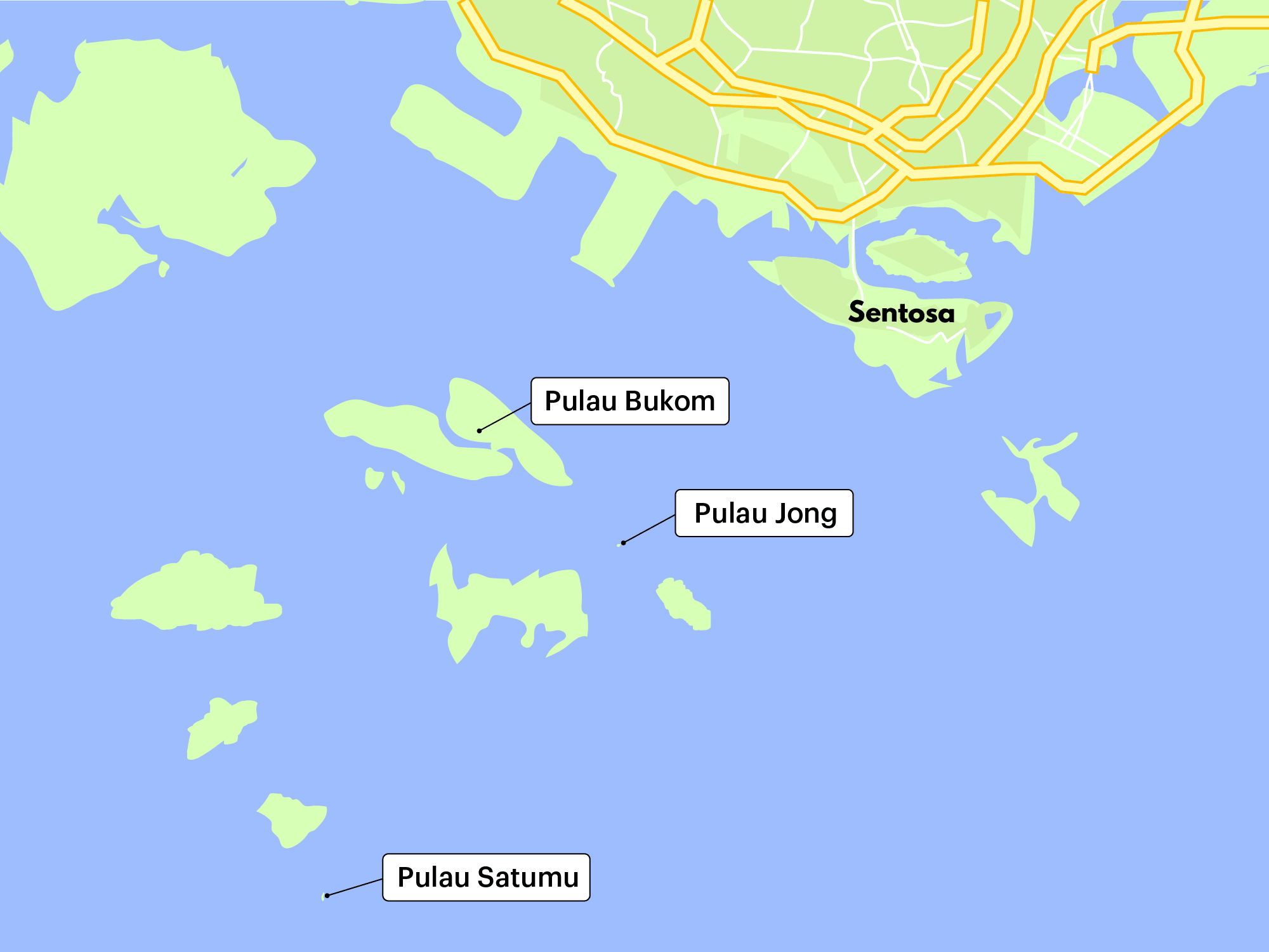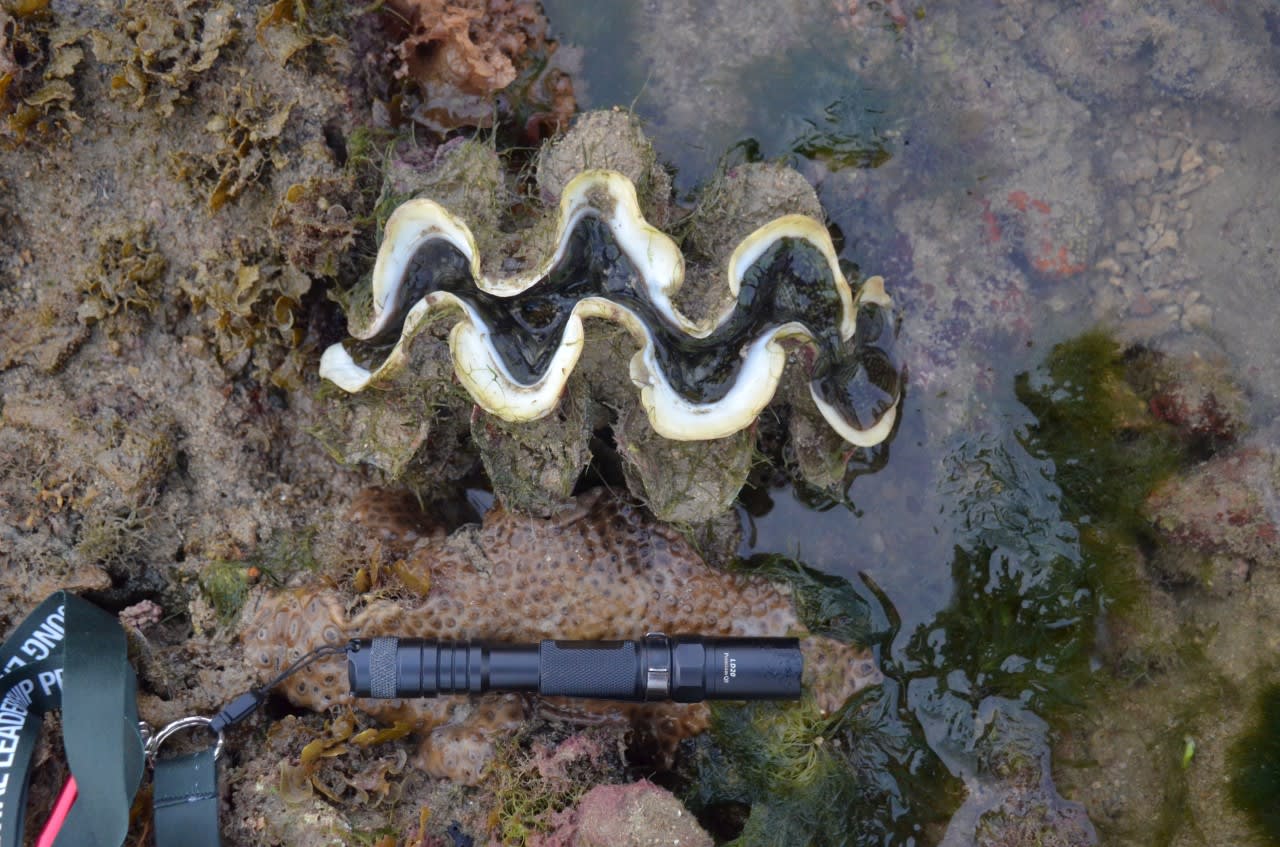Fish farms may be set up near 3 southern islands with high coral diversity, endangered marine life; public feedback underway
SINGAPORE — The Singapore Food Agency (SFA) is exploring the possibility of commercial fish farming in the waters off three of Singapore's southern islands to ensure food security, and is seeking public feedback on a report into the plan's potential environmental impact.

The Raffles Lighthouse at Pulau Satumu. The waters near the island could be used for commercial fish farming if a plan to ensure the Republic's food security comes to fruition.
- The Singapore Food Agency (SFA) is exploring the idea of commercial fish farming in the waters off three of Singapore's southern islands
- Pulau Jong, Pulau Bukom and Pulau Satumu are home to diverse coral reefs and endangered marine species such as the giant clam
- SFA is seeking public feedback on its environment report until June 1
- Marine experts and conservationists told TODAY that there may be an impact on the marine ecosystem but also highlighted ways to limit said impact
SINGAPORE — The Singapore Food Agency (SFA) is exploring the possibility of commercial fish farming in the waters off three of Singapore's southern islands to ensure food security, and is seeking public feedback on a report into the plan's potential environmental impact.
The waters near the three islands — Pulau Jong, Pulau Bukom and Pulau Satumu — are home to diverse coral reefs and endangered marine species, such as fluted giant clams, according to the report and experts who spoke to TODAY.
Any relevant public feedback from the exercise, which ends on June 1, will then be considered before the SFA seeks “final approval from the Government”, said a notice in the Government Gazette on May 5.
SFA, which is in charge of licensing and regulating farms in Singapore, had previously announced in March that it would also be opening up more sea spaces in the southern waters and the East Johor Straits for food production, though it did not specify the locations at the time.
The notice added that SFA made available a physical copy of the report, which can be viewed at its office at the Jem Office Tower in Jurong.
The total size of the three proposed project sites is close to 655,000 sqm — 101,072 sqm at Pulau Jong, 101,660 sqm at Bukom and 452,074 sqm at Satumu.
Shell Eastern Petroleum’s biggest regional refinery is located at Pulau Bukom, while Pulau Satumu is near three islands that are used by the Singapore Armed Forces (SAF) for live-firing exercises. Pulau Jong is situated near the Semakau landfill.
The study was carried out by SFA between September 2020 and October last year to determine the suitability of aquaculture farming in sea spaces off the three islands, as well as to address any concerns regarding the potential impact on the environment.
It found that the proposed sites will not intrude into the marine habitats, such as corals or seagrass, and are suitable for fish farming.
Responding to the report, marine scientists and conservationists said that the presence of aquaculture farms can negatively impact the marine ecosystem in various ways.
But they also told TODAY that if proper precautions are taken, fish farming can limit this impact through additional efforts like purifying water from the farms before it is discharged into the ocean.
WHERE THE ISLANDS ARE
Located around 5km from the tip of the Labrador Nature Park, Pulau Jong is a dome-shaped island that is relatively tiny — it measures about 0.6 hectares, which is smaller than the size of a football pitch.
Meanwhile, Pulau Bukom is home to Shell Eastern Petroleum’s biggest regional refinery, and is located more than a kilometre northwest from Pulau Jong.
Pulau Satumu, which is Singapore’s southernmost island, is part of the same island chain that includes the SAF live-firing areas of Pulau Sudong, Senang and Pawai. The Raffles Lighthouse is also located on the island.

RICH BIODIVERSITY FOUND
To prepare for plans to advance Singapore’s food security, SFA's notice said that an environmental impact assessment was done in order to meet the Republic's "30-by-30" goal.
This is a 2030 target set by the Government in 2019 to meet 30 per cent of the population's nutritional needs by producing food locally.
“One of the ways is to produce fish in an environmentally sustainable manner through new sea space tenders from end-2022 onwards,” said the notice.
According to the study viewed by TODAY, marine aquaculture, if done at scale, “is one of the most efficient sectors available for production of animal proteins”.
The report, which is over 320 pages long and was prepared by by environmental consultant DHI Water and Environment, highlighted the rich biodiversity and marine ecosystems found around Singapore’s southern waters.
For instance, located around the three islands are sub-tidal coral reefs — which are known for their relatively high diversity of hard and soft coral species — as well as intertidal habitats such as sandy shores, mangrove forests and seagrasses.
Marine megafauna such as the blacktip reef shark and sea turtles have also been documented within the waters around the southern islands.
Singapore is home to two native sea turtle species, the hawksbill turtle and the green sea turtle, which are listed as critically endangered and endangered respectively on the International Union for Conservation of Nature Red List of Threatened Species.
Other endangered species include the Indo-Pacific hump-backed dolphin and the fluted giant clam.
WHAT THE REPORT CONCLUDED
In general, the report concluded that the proposed sites are suitable for aquaculture farming, and they do not overlap extensive marine habitats such as corals or seagrass, though they will be near a recreational diving site at Pulau Jong.
To mitigate impact on the environment from aquaculture farms, the report suggested using closed containment systems, where fish and other aquatic animals are grown in tanks, as opposed to an open cage system since the quality of the water discharge can be monitored.
It added that a closed containment farming with a yearly production of 18,200 tonnes of aquaculture products is expected to have “limited impact on the ecosystems” at the proposed sites.
As for open cage farming, it is still feasible to have limited impact on the marine environment if the total maximum production of aquaculture products is capped at 22,260 tonnes per year.
That said, the report advised to maintain a buffer of 10 to 20 per cent below the maximum production “in case of unforeseen circumstances”.
It also warned that increasing aquaculture in the southern islands of Singapore may have an impact on pathogen breakout events, and a study on such risk should be considered.
WHAT SCIENTISTS AND CONSERVATIONISTS SAY
By and large, marine scientists and conservationists TODAY spoke with said they do not oppose the plan to have aquaculture farms in the southern waters, as long as appropriate measures are taken to ensure the water quality is not affected.
Mr Kua Kay Yaw, the chairman of the Marine Conservation Group at Nature Society (Singapore), said that global supply chain disruptions have brought to the fore the importance of Singapore being able to produce its own food.
And as the proposed farm sites are “located in deeper waters”, he does not foresee it to have a great effect on coral reefs, which are mostly around the fringes of the three islands.
That said, he said that any excess nutrients that enter the water via feed or waste could result in algae blooms, which in turn could affect the nearby coral reefs.
“I think the consensus in the group is that we would like them (aquaculture farmers) to use a self-containment system,” said Mr Kua. “With improving technology, they may even be able to purify the water before it is discharged.”
This was a sentiment the spokesperson for the Marine Stewards, a marine conservation non-profit, agreed with.
Added the spokesperson: “These systems are designed such that there won't be any escapees that may disrupt local ecology.”
Another area of concern highlighted by Mr Kua is that open cage farms may attract predators to the area, which may pose a danger to members of the public who use the surrounding waters for recreation.
Aside from the increased risk of algae blooms, Dr Toh Tai Chong, marine biologist and senior lecturer at the National University of Singapore, also shared that aquaculture farms can have four other major impacts on the marine ecosystem.
This includes destroying coral reefs to build pilings to keep the fish farms in place and increased boat traffic in the area that can generate waves that may shatter corals.
"Construction of aquaculture facilities may also change the water flow in the area, which may disrupt how marine animals move especially if the young, such as larvae, require movement from one area to the next... the young may not be dispersed far enough and (this can) lead to overcrowding," he said.
He also added that some fish farms also lay long nets to keep their fish, and these nets may entangle other marine animals, like turtles.

However, to reduce this impact, Dr Toh suggested that farms be monitored using "chemical and biodiversity indices" — such as nutrient levels in the water and coral cover — so that any impact on the marine ecosystem can be picked up early and mitigation measures can be put in place.
He also suggested to reduce the lease of the aquaculture farms so that the habitat has time to recover in between the leases.
"We have yet to find out in detail, the richness and the ecosystem value of these habitats, and so I sincerely hope that we can first establish the baseline and value of these habitats before proceeding," said Dr Toh.
"Coral reefs take decades to establish themselves, and if we lose it, it will be difficult to restore them."
Marine biologist Neo Mei Lin of the St John’s Island National Marine Laboratory, whose research interests include the giant clam, said there is insufficient research on how the presence of aquaculture farms can affect the invertebrates.
Based on her surveys, Dr Neo said there are at least four native fluted giant clams around Pulau Jong.
In any case, she said that in general, the introduction of any human activity within the vicinity of marine habitats, such as seagrass beds and coral reefs, could alter the environment's water quality.
For example, Dr Neo said giant clams are sentinel organisms that require good water quality and light penetration to thrive in its environment, as these parameters are necessary to support photosynthesis by their symbiotic microalgae that provides nutrients to the host clams.
“If these parameters become compromised, these giant clams would then be at risk and threatened.”













